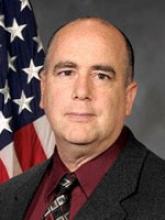Impact of Changing Design Requirements on Fundamental Structural Material Mechanics
Date & Time:
Fri, 03/06/2020 - 11:00amSpeaker:
Jaimie TileyJob title:
Program OfficerAffiliation:
Multiscale Structural Mechanics Portfolio, Air Force Office of Scientific ResearchLocation:
Discovery Park B155
Abstract:
The Air Force Office of Scientific Research (AFOSR) is the basic research arm of the Air Force Research Laboratory (AFRL) [1]. It is one of the nine technology directorates (TD) within AFRL and is the only one that operates primarily as a funding organization. AFOSR executes one hundred per cent of the Air Force core budget in basic research as well as the Air Force portion of the basic research budget of the Office of the Secretary of Defense (OSD). In combination, the two constitute the 6.1 line of budget activity available to the Air Force. AFOSR's vision is to enable the US Air Force to dominate air, space and cyber through revolutionary basic research. Its mission is to discover, shape and champion basic research that will profoundly impact the future Air Force. This mission is fundamentally different from other funding agencies such as the National Science Foundation, whose primary function is to fund research broadly across all fields of science and engineering. The breadth and depth of AFOSR's basic science investments provide the Air Force with the flexibility to pivot towards revolutionary game-changing capabilities in the future. This discussion will center on the role of basic research in the advancement of structural mechanics and materials, with emphasis on the emerging requirements for hypersonic and autonomous system materials interactions.
[1] Air Force Office of Scientific Research, Basic Research S&T Strategy, 2020.

Biography:
Jaimie Tiley is the Program Officer for the Multiscale Structural Mechanics and Prognosis Portfolio within the Air Force Office of Scientific Research. He is currently working to address fundamental research issues related to the coupling of physics based mechanics models across different length scales, and researching low density materials for use in advanced aerospace systems. Specific research areas include the coupling of high energy diffraction and electron microscopy techniques with crystal plasticity finite element techniques, development of advanced thermodynamic and phase evolution models, and the integration of thermal and acoustic deformation models with computational fluid dynamics techniques. He has a Bachelor of Science degree in Systems Engineering from Wright State University, Masters of Science degree in Systems Engineering from Wright State University, a Masters of Science degree in Environmental Engineering from the Air Force Institute of Technology, a Masters of Science in Materials Engineering from The Ohio State University, and a Ph.D in Materials Science and Engineering from The Ohio State University. He is also a graduate of Air War College and fellow of ASM International. He has over 30 years of engineering and program management experience working aerospace research programs for AFRL and LCMC, including his service as the Program Manager for the Metals Affordability Initiative, the Center for Aerospace Manufacturing Technologies, and the Institute for Science and Engineering Simulation.
Department:
Materials Science and Engineering